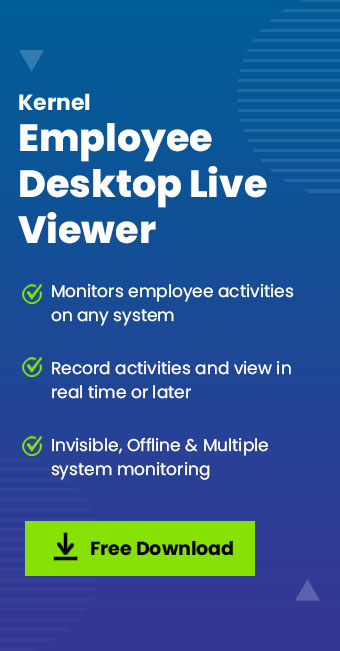Read time: 5 minutes
The need for monitoring was not even a topic of discussion among many organizations a few years back. But as the Covid pandemic rose to its peak in the world, it completely changed the working dynamics of many industries. Work from home became the new normal and there was no choice but to adapt to the situation and somehow add real time desktop monitoring to the working routine. This is the prime reason behind it’s rise. There was a huge dip in the productivity of employees, resulting in an ineffective organization. Employees were working from their respective homes facing many distractions, which needed to be monitored closely. This was a challenge initially since there was no improvement in the situation; companies had to find and adopt properly researched methods to observe the work of their employees. Here, in this article, we will discuss in detail the rise and what the future holds for it.
What increased the need for employee monitoring?
The remotely working system had its own perks for the employees and they did enjoy that time period. But that was not the case with the employers.
Since the daily work deliverables were low or none, the losses were on the company. Low productivity was experienced by the entire staff. It was becoming challenging to observe the employee’s performance when they are not working in front of you. Remote work gave rise to trust issues and misunderstandings between the management and staff.
In order to adapt to the changing situation, new and better methods had to be introduced on an urgent basis. Some companies display trust towards their employees and provide flexibility on any such stringent regulations. However, some organizations do not want the workflow to get disturbed and have issued some severe measures.
How to cope with this change?
Brains were put to extensive use to deal with this never-experienced situation. Ultimately technology came to the rescue! All kinds of businesses, whether small or multinational, had to extensively spend on top-class technologies to secure against any cyber security threats and risks. Many monitoring and tracking tools were in high demand. They ensured tracking of computers, web visits, and keyboard activity along with the location of the individual’s system. Such tools provided a fair idea about the productivity of the employees.
What are its advantages?
If the right measures are applied effectively, there are many advantages as well. Some of them are mentioned below-
- Productivity improvement
There are some major productivity killers in the workspace and overcoming them is a critical task. It goes a step further when employees are working from home with many distractions. Poorly managing the working hours affects the overall productivity of the employee. With monitoring softwares, managers are very well aware of the hours being spent on work and hours of inactivity. It creates a certain level of an office-like environment which forces employees to complete all their work during the set office hours. - Better reporting
Manual reporting is a tedious task with low accuracy. It can never match the accuracy of the software. In addition, it is not possible especially when employees are working remotely. Any monitoring software automatically generates automated timesheets which are 100% accurate. - Improved surveillance of employees
Despite not working from the office space, employers can still manage to watch employee activities. The tools allow management the flexibility to oversee the employees’ work. They can keep a check on the progress of the tasks assigned. - Increased individual performance
Since all the individuals are well aware that they are being watched closely, they will aim towards lowering their idle time and working just like they used to do in the physical office space. Every employee will take up the responsibility for their own tasks and will work towards delivering them on time. Hence, these tools if used to their full capacity can guarantee a dip in unproductivity. - Easy task management-
Without the tool, it is difficult to track the hours employee is allocating to a particular task. However, with tools, employers can determine the exact time taken to finish the given task. Individuals can keep a note of all the job responsibilities and the time required to accomplish them.
What lies in the future?
One thing is sure, work from home culture is here to stay and so is the case with employee monitoring software and other measures. Many organizations have become flexible and offer work from home on certain days. Even they do have an advantage when employees work remotely. It saves many expenses like rent of the office space, electricity, maintenance, etc. All this has only been possible since they have a strong set of monitoring measures. The rise of this aspect was during the pandemic, but it can be concluded that it does have a bright future ahead.
Which is the most reliable software?
It is difficult to find secure professional software to do this heavy-duty task. But Kernel Employee Desktop Live Viewer is software well capable of monitoring all employees working from home and recording their system’s activities. It offers to monitor multiple systems located anywhere by being invisible to the eyes of the employee. The recording of the system’s activity can be viewed later or in real-time by the manager/supervisor.
Final words
The rise of employee observation occurred during the pandemic and is going to stay in the future. It was necessary to keep the employee’s enthusiasm and productivity at an all-time high even in remote working culture. This required some serious measures which were implemented by almost all the organizations. It leads to increased productivity, individual performance, engagement, collaboration, reporting, and management. Professional software that can be used for the same has also been mentioned.







